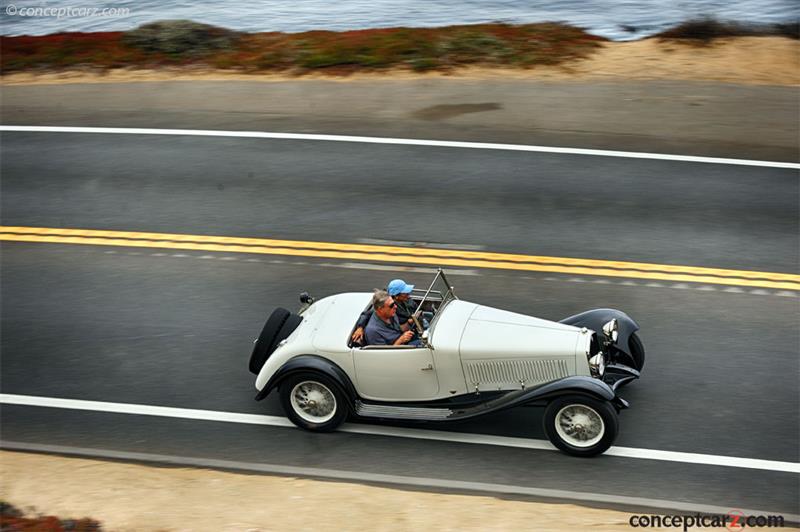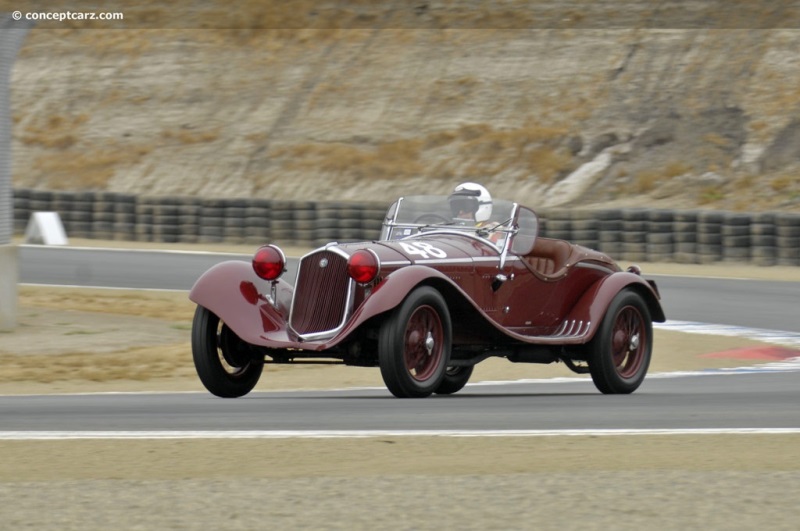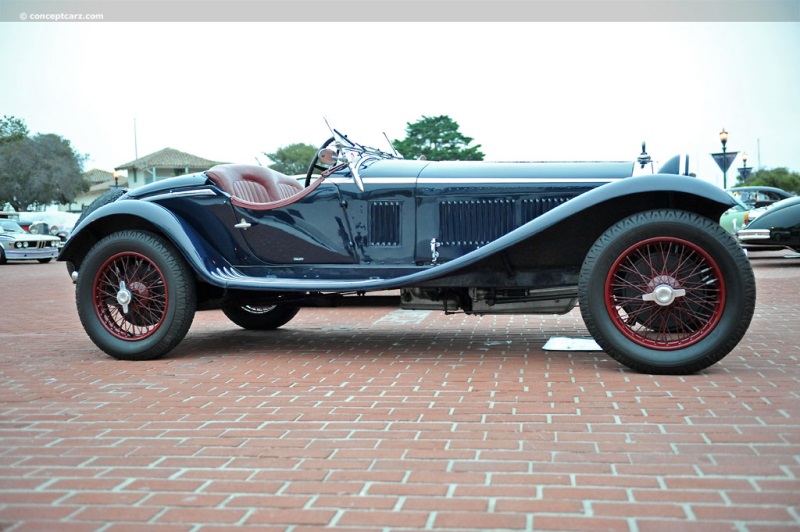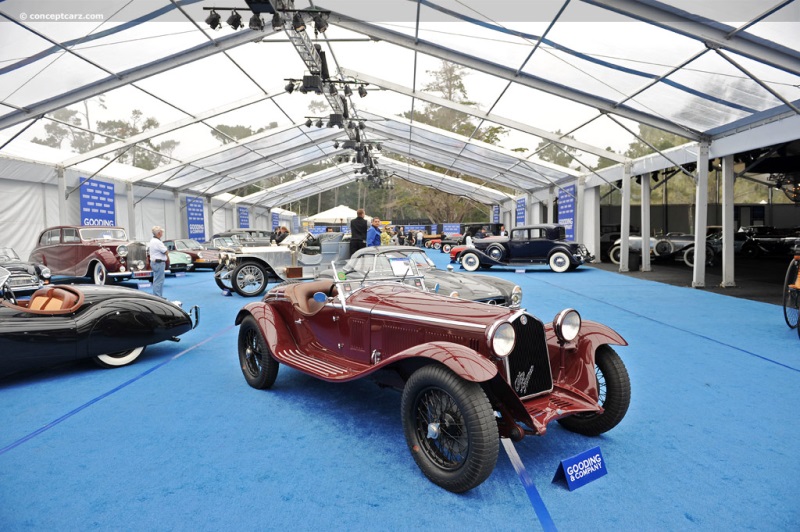The Alfa Romeo 6C 1750 was light and nimble with excellent road-holding characteristics and plenty of reliable power. Its all-alloy straight-six was designed by Vittorio Jano and in its ultimate configuration, used twin overhead camshafts, hemispherical combustion chambers, and a roots-type supercharger. It was built in three series between 1930 and 1933, and in both Gran Sport and Testa Fissa forms, the 6C 1750s won nearly every major sports car race of its era, including the 24 Hours of Spa, Monza Grand Prix, Brooklands Double Twelve, and the Mille Miglia. 
Spyder by Zagato
Chassis #: 6C10814391
View info and history
Auction entries : 1The Alfa Romeo 6C, with the '6C' in reference to its six-cylinder engine, was produced from 1927 through 1954 beginning with the 6C 1500 of 1927 to 1929. It was introduced at the Milan Motor Show in 1925 and began series production in 1927. The engine's displacement measured 1,487 cc (thus, the 1500 portion of its name) and the early examples were bodied by James Young and Carrozzeria Touring. The 6C Sport model arrived in 1928 and its dual-overhead-camshaft engine earned many race victories, including the 1928 Mille Miglia. Of the approximately 3,000 examples of the 6C 1500 produced, around 200 had the DOHC version of the engine and ten with superchargers (known as Super Sport).The 6C 1750 arrived in 1929 with a 1,752cc engine with the base version using a single overhead camshaft while the Super Sport and Grand Sport used a double overhead camshaft. A supercharger was available, and most examples were sold as rolling chassis with coachwork provided by Zagato, Castagna and Touring Superleggera. Sport touring or spider bodies were popular, and perhaps as few as three were given coachwork by Carrosserie Figoni and another three by James Young. Wheelbase sizes varied, with the Turismo version measuring 122-inches, the Sport and G.T. being 115-inches, the GT Compressor at 124.4 inches, and the Super Sport and Gran Sport measuring a short 108.1-inches. The suspension was independent at the front with torsion bars and unequal-length wishbones, while the rear employed a live axle suspended on trailing links and a one-piece torsion bar. The gearbox was a four-speed manual unit and four-wheel mechanical drum brakes provided the stopping power. The mechanical braking system used large drums actuated by a transmission system. The pressed steel frame was perfectly balanced and rigid due to its reinforced axles. The leaf springs were mounted outside the car body instead of beneath the side members, and the lower center of gravity greatly improved its performance. Its balance was further perfected by placing its fuel tank further back, positioning the weight above the rear wheels which aided in axle balance. When the supercharger was installed, it endowed the water-cooled 6-cylinder engine with greater horsepower and torque. In Gran Sport configuration, the engine developed approximately 85 horsepower and gave the nimble vehicle a top speed of around 90 miles per hour. With and without a volumetric compressor, output from the 6C 1750 engine ranged from 46 horsepower of the Turismo version to the 102 hp of the Gran Sport 'Fixed Head.' The latter was a special version built in limited quantities with its cylinder head and crankcase cast in a single block to eliminate the seals. Weighing a mere 840kg, these versions had a top speed of 105.6 mph. 
Spyder by ZagatoDuring the 1929 season, the 6C won every major racing event in which it was entered, including the Grand Prix of Spain, Tunis, Monza, Belgium, Ulster TT, Brooklands Double Twelve, and the Mille Miglia. The car was victorious at the 1930 Mille Miglia and the Spa 24 Hours. Tazio Nuvolari drove one to an overall victory at the IV Coppa delle Mille Miglia. Giuseppe Campari repeated this feat in 1931 with his.During its production lifespan, Alfa Romeo produced 2,635 examples of the 6C 1750, including 369 examples of the Super Sport and Grand Sport.
by Daniel Vaughan | Sep 2021
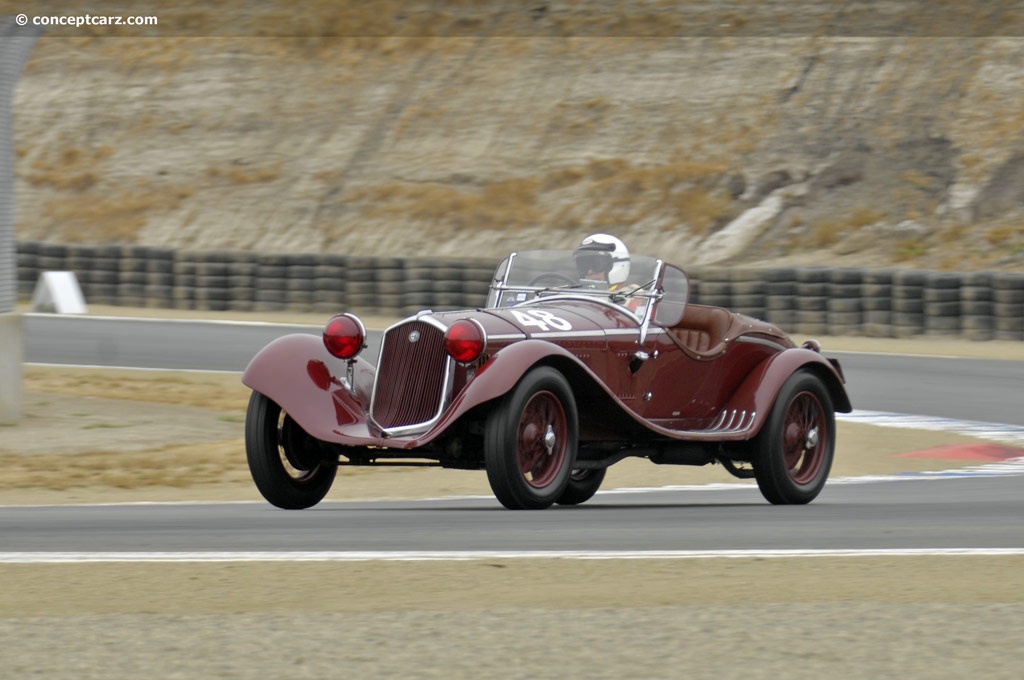
Spyder by Zagato
Chassis #: 6C10814391
View info and history
Auction entries : 1
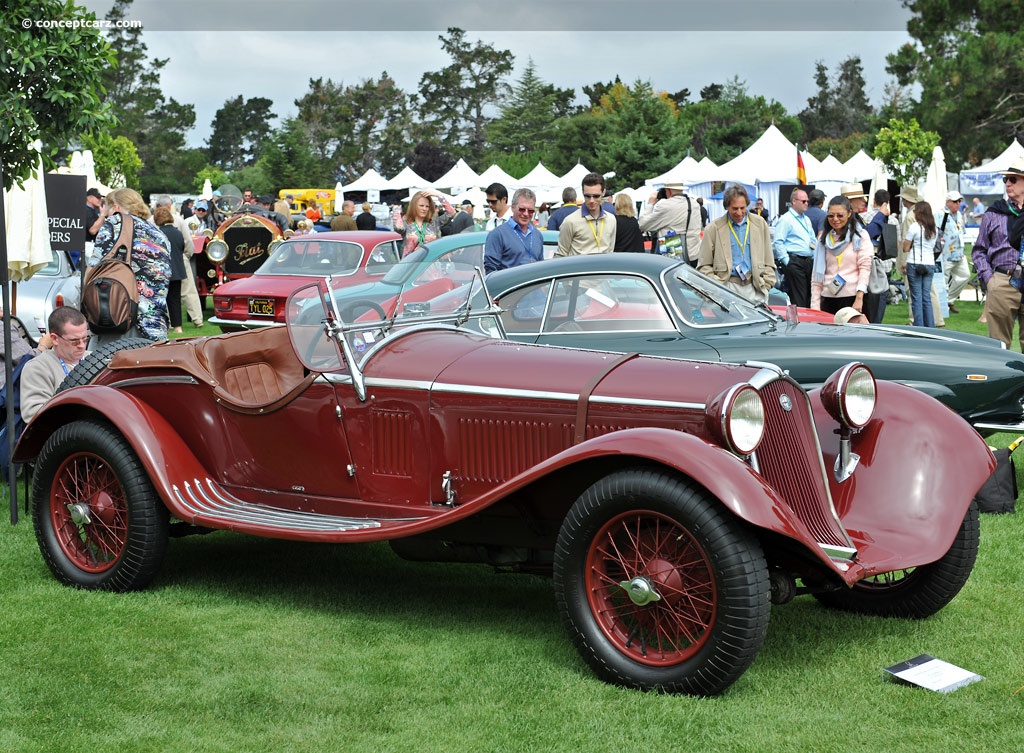
Spyder by Zagato
by Daniel Vaughan | Sep 2021
Related Reading : Alfa Romeo 6C History
The Alfa Romeo 6C 2500 was introduced near the end of the 1930s. The 6C name was derived from the engine size, an inline-six while the 2500 represented the engines cubic-centimeter displacement size. The engine was a version of Vittorio Jano designed a six-cylinder engine. The 6C was available in a plethora of body styles and wheelbases and was produced during two different times in history.....
Continue Reading >>
Continue Reading >>
1932 Alfa Romeo 6C 1750 Vehicle Profiles
Recent Vehicle Additions
Performance and Specification Comparison
6C 1750 Specification Comparison by Year
Year
Production
Wheelbase
Engine
Prices
Related Automotive News

Phenomenal Ferraris and Italian Thoroughbreds Offered at Gooding & Company's Pebble Beach Auctions
The auction house announced a stable of Italian star cars, including a 1950 Ferrari 166 MM Berlinetta Le Mans, a 1961 Ferrari 400 Superamerica Series I Coupe Aerodinamico, and a 1954 Ferrari 500 Mondial Series I Spider.
A stunning group of star...

Ex-Scuderia Ferrari Alfa Romeo 8C 2300 Monza Spider By Zagato Scoops Best Of Show At Salon Privé
Alfa Romeo 8C 2300 Monza Spider by Zagato raced by Tazio Nuvolari wins top award
Leading designers present inaugural Churchill Cup to rare Lancia Astura
Duke of Marlborough selects his favourites on two wheels and four
Record entry for the UKs...

'Storie Alfa Romeo' Episode 2: Iconic 6C 1750 Foretells Future And Dominates Its Era
In the 1930s, the 6C 1750 possessed the unique ability to win both races and design awards
With outstanding power to weight ratio and perfect balance, the 6C 1750 launched technical traditions that continue today
The flying man from Mantua...

Alfa Romeo Finishes One-Two-Three At The Mille Miglia 2018
Alfa Romeo takes top three places at the Mille Miglia
Marcus Ericsson and Charles Leclerc, the drivers of the Alfa Romeo Sauber F1 Team, drove a 1932 Gran Premio Tipo B and a 1955 750 Competizione
The interweaving of past and future continues on th...
2018 Mille Miglia: Sealing And Inspection
A special edition celebrating the 90th anniversary of Alfa Romeos first win in the Red Arrow race gets under way
To celebrate the historic milestone and to transfer the passion from legendary models to current production, a special site with 90 ph...



















